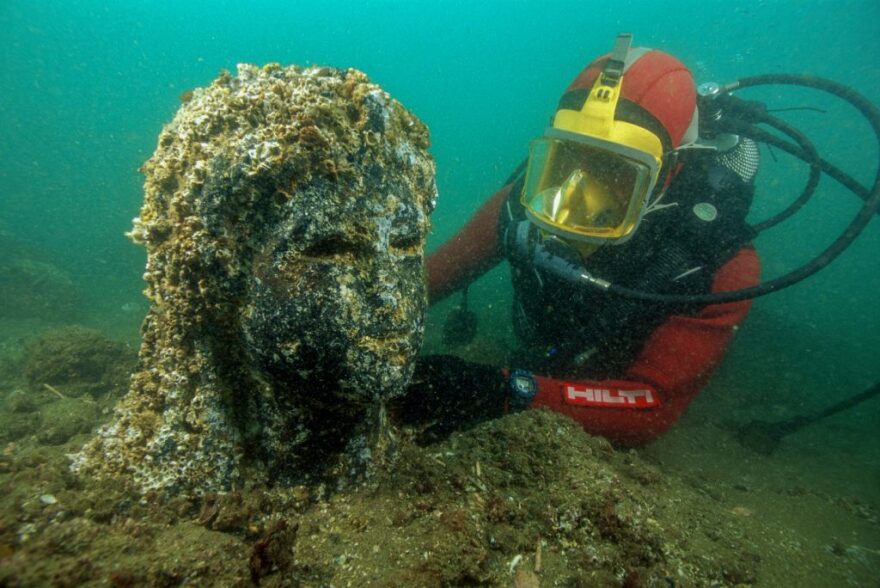As an underwater archaeologist, Franck Goddio has explored many strange and fascinating things under the sea during the course of his career. But nothing quite compares to the moment he first came across the remains of an ancient city just off the coast of modern-day Egypt.
The president of the European Institute for Underwater Archaeology described what that experience was like on this week’s St. Louis on the Air in conversation with host Don Marsh and Lisa Çakmak, associate curator of ancient art at the Saint Louis Art Museum.
“The visibility was very, very poor, and I started to clean what looked like a shipwreck's rock, and inside it was something harder,” Goddio said. “It was a block of red granite, and there was an inscription on it, in hieroglyph: ‘Live forever.’ I took it as a good omen.”

Goddio and his team have since uncovered all sorts of illuminating artifacts from what were once two centers of ancient Egyptian civilization: Thonis-Heracleion and Canopus. And for the next six months nearly 300 of those finds, some of them dating from the eighth century B.C., are in St. Louis as part of the art museum’s “Sunken Cities: Egypt’s Lost Worlds” exhibition, which opens March 25.

Goddio co-curated the show with Çakmak, who noted that it includes everything from monumental sculptures – including a 10-ton statue of the god of prosperity – to small earrings and statuettes that together offer a broad sense of the populations that once called Thonis-Heracleion and Canopus home.
“To be able to host a show that is grounded in real-time scholarship and with material from an active archaeological excavation is really something I never would have expected,” Çakmak said.

She added that “Sunken Cities” is a show “you have to see” in order to believe that all of it was hidden under water until just a few years ago.
For more information about the exhibition at the art museum, visit its website. And for a different Egypt-themed look at the museum, check out science reporter Eli Chen's story about what the latest CT scanning technology is revealing about its mummies.
She discussed it on Friday's St. Louis on the Air.




